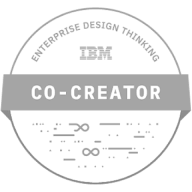
Metaverse Shopping Platform Development: the Latest Ecommerce Revolution
Want to know more? — Subscribe
Ecommerce has undergone drastic transformations over the last few decades to deliver customers the most satisfying shopping experiences. People who don’t keep up with the news about the metaverse would be surprised by how many well-known brands and companies have already moved into the metaverse app development.
The metaverse is a virtual world where users can interact and engage in various activities, including shopping. As technology advances, an increasing number of people spend more time online. No wonder businesses strive to make a metaverse platform for online shopping they could use to connect with customers and drive sales.
If you want to take full advantage of metaverse technology and stand out among other ecommerce platforms, the creation of a metaverse shopping platform is the most promising solution that is all the rage now.
In this article, you will learn how to build a metaverse ecommerce marketplace, the features of such platforms, technologies used for metaverse apps, and how they can bring your ecommerce business to the next level.
Perspectives of Metaverse Shopping Platforms
The future of metaverse ecommerce platforms looks bright as more and more businesses are exploring the potential of VR (virtual reality) and AR (augmented reality) to enhance customers’ shopping experiences. Unsurprisingly, the global metaverse market is expected to grow from $1.1 billion in 2020 to $11.2 billion by 2025, at an annual growth rate of 58%.
One of the key drivers of this growth is the increasing adoption of VR and AR technologies in ecommerce. Mark Zuckerberg and Meta were the first to bet big on the metaverse, while Deutsche Bank called it the next ecommerce revolution. The metaverse is already changing the way customers shop today, with several successful examples of businesses embracing this technology.
For instance, IKEA has created an AR app allowing customers to visualize the company’s 2,000 products in 3D and shop for furniture in a virtual environment. Google Trends shows that searches for IKEA went up after the platform's release. Within a few months, other companies started to make similar apps.
Another example is the beauty brand Sephora, which has created a VR platform where customers can try on makeup and hairstyles in a virtual environment. After the company improved the user experience, the number of people using the AR feature went up by 28%, and the overall traffic on the platform increased by 48%.
Experts from Citi Global Insights predict that by 2030, nearly five billion users will join the metaverse for entertainment, shopping, transactions, education, and healthcare.
The future of metaverse ecommerce platforms looks promising as the technology is becoming more advanced and accessible. Thus, businesses that invest in it today will soon be well-positioned to capitalize on the metaverse market growth.
The Benefits That The Metaverse Store Development Can Provide
Metaverse ecommerce marketplace provides unique and immersive shopping experiences for customers. For instance, interacting with products and brands in a virtual environment. A metaverse shopping platform is also a powerful tool for businesses to engage customers and grow their online presence in new and innovative ways. Let’s look at the most compelling benefits of building a metaverse commerce platform.
Increase customer reach
Reach out to a larger audience by providing customers with a virtual space to discover products and interact with them. If you create a metaverse platform like Obsess, you will attract those looking for unconventional solutions to their needs or just want to check out what your platform offers using VR or AR technology.
Engage customers
Provide immersive and interactive experiences that can help businesses to engage customers in new and exciting ways. Metaverse shopping platform development opens plenty of options for online store owners. For instance, building virtual fitting rooms, or offering makeup and glasses try-on, or creating virtual showrooms without extra expenses.
Build brand loyalty
By providing unique and memorable metaverse shopping experiences, businesses can establish a deeper connection with customers and build brand loyalty. When customers enjoy their personalized shopping experience on your metaverse platform, they are more likely to come back for more.
Drive sales
Through virtual shopfronts, businesses can showcase their products more engagingly and interactively, ultimately driving sales. For example, the Gucci Garden show in Roblox attracted nearly 20 million users during its 2-week virtual art installation.
Create new revenue streams
Metaverse shopping platform development provides new revenue streams through digital goods and services, subscriptions, and in-world advertising. Thus, Samsung decided to build its first metaverse store in Decentraland. Since it opened, more than 120,000 people have bought something from Samsung's digital store.
Cost savings
Developing and maintaining a metaverse platform for shopping helps businesses reduce costs associated with physical shopfronts and inventory management. Customers no longer need to go to the store to try on clothes—they can do it virtually from the comfort of their homes.
Personalization
Metaverse shopping platforms can personalize the shopping experience through customized avatars, virtual assistants, and personalized recommendations. Omnichannel integration also allows customers to seamlessly switch between different channels, such as in-person, online, and virtual, to complete their purchases and have fun along the way.
Store Types That Can Be Created in The Metaverse Platform Solution
One of the most exciting metaverse aspects is creating various store types to reach different customers and market segments. Here are some of the most common store types that you can build in a metaverse platform solution.
Virtual Stores
These stores are entirely digital and exist only in the metaverse. Virtual stores are perfect for businesses that want to reach customers looking for more immersive shopping experiences.
Retail Stores
Retail stores created in the metaverse can provide customers with virtual 3D versions of physical ones. It’s a great way to manage a large inventory of different product categories with various sizes and color options.
Clothing and Accessories Stores
Clothing stores are created in the metaverse to provide customers with a virtual version of a physical store that specializes in clothing. Your customers can make personalized avatars by giving a few measurements of their bodies and scans of their faces to try on clothes with a photo-realistic avatar.
Car Stores
Virtual car stores showcase detailed and realistic models, allowing customers to get a sense of the salon and functionality of any model. For example, Ferrari used this approach for the landing page of their new 296 GTB. However, this could be taken much further to create a metaverse platform for shopping for such expensive items.
Since the metaverse is growing further, and companies are still exploring the possibilities for ecommerce, other shopping platforms can also benefit from metaverse solutions. The sky is the limit here!
Must-Have Features for a Metaverse Shopping Platform
When building a metaverse commerce platform or online store, it's important to consider the functionality that will be beneficial for your businesses and customers. Let’s explore the key features a metaverse store platform development should provide.
3D Virtual Shopping
This feature provides an immersive and interactive 3D virtual shopping experience that allows customers to browse and purchase items in a virtual environment.
Shopping With Avatars
Thanks to this feature, customers can create and use avatars to shop in the metaverse, which makes their shopping experiences more personalized and engaging.
Product Demos
Businesses can showcase their products more effectively with this function; for instance, through virtual product demonstrations.
Browse & Purchase Items
A user-friendly interface allows customers to browse and purchase items in the metaverse with ease.
Product Listing
With it, businesses can list and manage their products in the metaverse, including pricing, inventory, and shipping.
Smart Search Functionality
Smart search functionality helps customers to find products based on various criteria, such as price, category, and brand.
Real-World Deliveries
Businesses can streamline their real-world delivery of products, such as shipping physical goods to customers.
Gamification
Incorporating elements of games into the shopping experience, such as virtual quests, rewards, and challenges, will keep customers engaged with the platform and motivate them to shop intuitively.
These are just some of the main features a metaverse shopping platform development can provide. Businesses should consider incorporating the latest technology and trends in the industry and seek experts’ advice to ensure that their metaverse store platform development solutions are tailored to their audience’s specific needs and provide the best shopping experiences.
The Role of AR & VR in the Metaverse Shopping Platform
Virtual Reality (VR) and Augmented Reality (AR) are essential technologies for a fully-functioning metaverse shopping platform. Extended reality (XR) is a term that encompasses VR, AR, and mixed reality (MR).
These technologies provide an immersive and interactive experience for customers, allowing them to fully engage with the virtual environment.
VR technology allows customers to enter a fully-immersive 3D virtual environment, where they can interact with products and explore an online store. It can be especially useful for businesses that want to showcase products more visually, such as through virtual product exhibitions.
For example, Ralph Lauren, a fashion brand, showcased its collection of NFT wearables using virtual avatars. Forever 21, another fashion retailer, opened a virtual store together with the Virtual Brand Group. Players can build and customize their own stores using the brand’s fashion items and even compete with other users.
AR technology, on the other hand, overlays digital information on top of the real world, allowing customers to see products in the context of their actual environments. AR is used to create virtual fitting rooms, allowing customers to try on clothes, experiment with makeup and hairstyles, or visualize furniture or artwork in their living rooms.
Using VR and AR in a metaverse shopping platform also allows for personalizing shopping experiences. So, overall, these technologies are critical if you want to develop a metaverse shopping platform.
Other Technologies You Need to Use
In addition to VR and AR, there are several other technologies to create a platform for metaverse stores.
NFT (Non-Fungible Token) technologies
NFTs are digital assets that are unique and cannot be replicated. This technology can help create virtual shopfronts, digital goods and services, subscriptions, and in-world advertising. NFTs can also serve as virtual collectibles users can buy, sell, and trade in the metaverse.
Blockchain technologies
Blockchain technology is used in metaverse store platform development to secure and validate transactions in the metaverse. Also, it helps create a decentralized and transparent market for buying and selling digital goods and services.
Artificial intelligence (AI)
AI can personalize the shopping experience for customers, analyze vast amounts of data on customer behavior, and provide valuable insights for businesses to improve their products and services.
Cloud Computing
Cloud computing allows scaling the platform and handling large numbers of users and transactions while reducing infrastructure and maintenance costs.
Internet of Things (IoT)
IoT devices can provide customers with more immersive shopping experiences by allowing them to interact with products in the metaverse using physical devices, such as VR headsets, smartwatches, smart glasses, etc.
Overall, the tech stack you need to create a metaverse ecommerce shopping platform depends on the specific needs and goals of your business. But using any of these technologies ensures more immersive, engaging, and personalized shopping experiences for customers, ultimately leading to increased sales and customer satisfaction.
How to Create a Metaverse Shopping Platform
Metaverse shopping platform development is a creative but still technical process. It should be approached as a project requiring multiple stakeholders and a dedicated team of developers. Here are some of the crucial steps involved.
Define Project Scope
First, identify the specific needs and goals of your business. Determine the target audience and the types of products or services you want to offer in the metaverse. This step also involves identifying the specific technologies required for creating the platform. Finally, you will need to set the project’s budget, timeline, and resources.
Find Experts With Experience in Metaverse Development
Once the project scope has been defined, the next step is to find experts with experience in metaverse development. It's critical to find a team that is experienced in working with the specific technologies you will need to create the platform, such as VR, AR, and blockchain.
Design, Development, and Prototyping
After finding the right team, the next step is to start the design and development processes. This includes creating a detailed design and platform architecture. The result of this stage is a prototype setup, which is then tested for its functionality and usability.
Test & Deploy Your Platform
Once the platform has been developed, the final stage is to deploy it. This includes testing the platform in a live environment to ensure it’s fully functional and working as expected.
Approximate Costs for Metaverse Shopping Platform Development
The cost of building a metaverse commerce platform varies significantly depending on many factors, including the specific features and functionality of the platform, the complexity of the design and development, and the technologies used.
Here are some general factors that can influence the development cost.
Size and complexity of the project
The more features and functionality are included in the platform, the more complex and time-consuming the development process will be, which impacts its cost drastically.
Technologies used
The cost of your project will majorly depend on the required technologies. For example, developing a platform using VR technology may be more expensive than using AR technology.
Maintenance and support
It's important to consider that metaverse platform development is not a one-time cost. It includes ongoing maintenance and support, taking into account customer feedback.
Based on these factors, the cost of developing a metaverse shopping platform can range from tens to hundreds of thousands of dollars. Therefore, it's crucial to budget your project appropriately while keeping in mind the expected benefits for your brand and business once the platform is live.
Softermii Experience with Ecommerce Marketplace Development
Metaverse store platform development is a technical process that involves some cutting-edge technologies. Softermii is a team of experienced developers who know the ins and outs of ecommerce platform development.
Streamotion
Streamotion is an e-commerce app with powerful live-stream functionality.
Challenges: Business owners wanted to connect with their partners and influences in one broadcast and sell items together. Also, they needed to conduct giveaways and offer a built-in shop with all items.
Technical solution: Live streaming using VideoRTC and AI translation, built-in randomizer, and integrations with payment systems like PayPal, Stripe, and Braintree.
Results: Younger audience was attracted after engaging live stream campaigns on the app. Meanwhile, potential buyers spend, on average, 25 minutes on the app daily.
Radiant
Radiant is an NFT marketplace with minting features, world map tours, and audio discussion rooms.
Challenges: To create an NFT marketplace so that consumers and content creators can earn money while interacting with the application
Technical solution: Scalable 3D model reconstruction with images navigation in the point cloud, teleportation between worlds feature, and Strapi CMS to build smooth integrations with IoT devices.
Results: App users can store their NFTs in catalogs, teleport within the app to share their experiences, and explore tours inside the clouds. 38,000 users downloaded the app during the first six months after the release.
Final Thoughts
The creation of a metaverse shopping platform is a complex process that requires the expertise of a multidisciplinary team. If you're looking to create a metaverse shopping platform for your business, look no further! We at Softermii are ready to help.
Softermii has a track record of success and is trusted by clients to deliver high-quality solutions meeting each project’s unique needs. We approach each new client individually, taking the time to understand their specific goals and working closely with them to create a platform that addresses their requirements.
Don't miss out on the opportunity to take your business to the next level with a metaverse shopping platform. Contact Softermii to learn how we can implement your idea for a metaverse ecommerce marketplace.
Frequently Asked Questions
How does a metaverse shopping platform work?
A metaverse shopping platform is a virtual reality environment where users can interact with each other and purchase virtual goods and services.
How to secure the metaverse shopping platform?
To secure a metaverse shopping platform, one should implement specific measures, such as encryption, secure payment processing, and user authentication.
What are some examples of metaverse ecommerce platforms?
Some examples of metaverse ecommerce platforms include Decentraland, Somnium Space, and Cryptovoxels.
Does your company have experience in building metaverse shopping platforms?
Softermii is experienced in advanced ecommerce app development, applying such technologies as AI, AR, VR, NFT, and IoT. Some examples of our successful projects are Radiant and Streamotion.
How about to rate this article?
157 ratings • Avg 4.5 / 5
Written by:




















